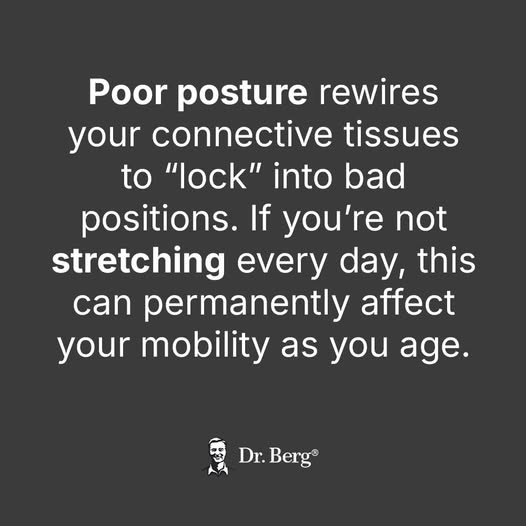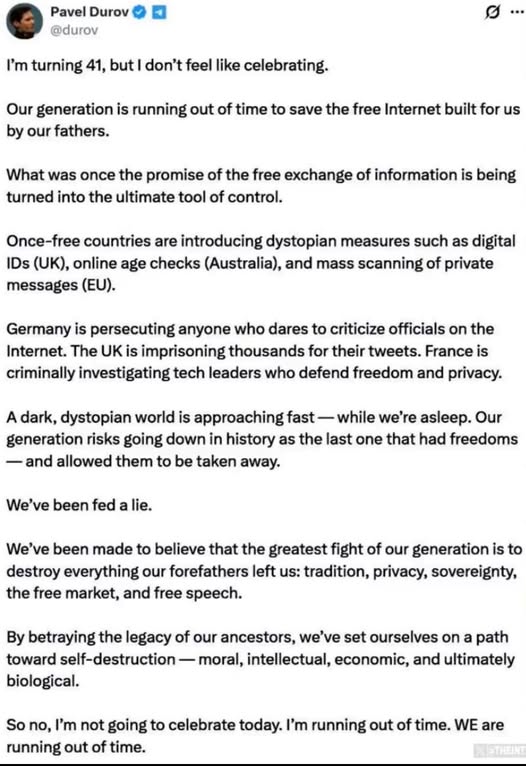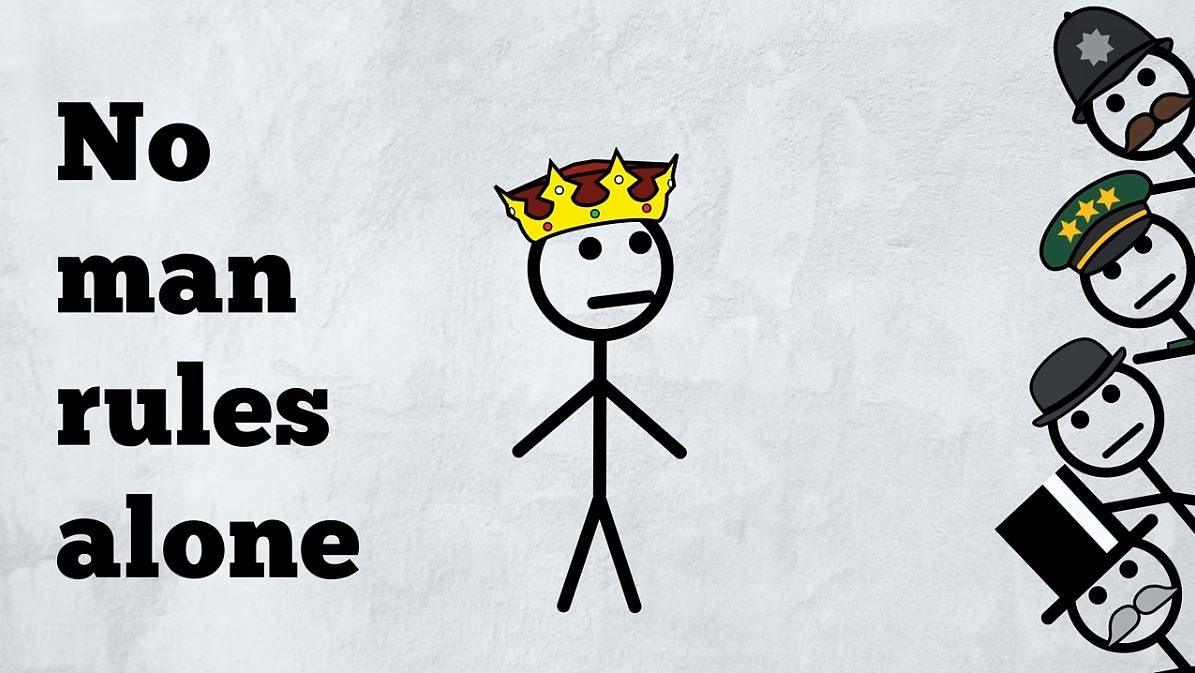
Wish I’d learned THIS one 60 years ago!
Click to view the video: https://www.facebook.com/share/r/19fefvWz2q/

Tom's Blog on Life and Livingness

Wish I’d learned THIS one 60 years ago!
Click to view the video: https://www.facebook.com/share/r/19fefvWz2q/

“We Consider The Cholesterol Level Of 350 Perfectly Fine.”
Barbara O’Neill
“Now, Doctors Want You Down To 150″…Every Time The numbers Are Lowered, Millions More People ‘Need’ Drugs.
That’s Not Health Care, That’s Greedy Marketing.
Statins Are A $22 Billion Dollar Industry.
Dr Uffe Ravnskov, world renowned Lipidologist, “For half a century, a high level of total cholesterol (TC) & low-density lipoprotein (LDL-C) has been considered to be the cause of atherosclerosis & cardiovascular disease (CVD), & statin treatment has been widely promoted for cardiovascular prevention.
“The Cholesterol Hypothesis was falsified & has been unequivocally proven as false. The Framingham Heart Study failed to prove that cholesterol causes heart disease…in fact it proved the opposite. The findings of the 30year study actually shows that when cholesterol is lowered…mortality INCREASES.”
“The hypothesis that high total cholesterol causes CVD was introduced in the 1960s by the authors of the Framingham Heart Study. However, in their 30-year follow-up study published in 1987, the authors reported that ‘For each 1 mg/dl drop in total cholesterol per year, there was an 11% increase in coronary & total mortality’.
“If high LDL-C was the major cause of atherosclerosis & CVD, people with the highest LDL-C should have shorter lives than people with low values. However, in a recent systematic review of 19 cohort studies including more than 68,000 elderly people (>60 years of age), we found the opposite. In the largest cohort study, those with the highest LDL-C levels lived the longest.”
“In a systematic literature review of all statin trials that presented all-cause survival curves concluded that statin therapy only extends life by 3.2 days.”
“So I make no mistake by saying that long term treatment with a statin is an iatrogenic mitochondrial disease…a physician caused death. Physician’s have broken their oath to ‘first do no harm’ by prescribing the deadly cholesterol lowering statin that is causing Parkinson´s disease, Alzheimer´s, chronic fatigue, cardiomyopathy, diabetes, fibromyalgia, kidney disease, unexplained heart failure, multiple sclerosis, epilepsy, etc.”
There are no benefits in taking a cholesterol lowering statin. It is harmful to every cell in the body to lower cholesterol, which is the building block to every cell membrane.
Statins cause a litany of side effects that will cause sickness & a low quality of life. Statins do not lower Cardiovascular Risk or Disease, Stroke, Heart Attack or Mortality. Statins cause more death.
Chronic Conditions Caused By Statin Drugs:
Liver Inflammation & Damage
New Onset Type 2 Diabetes
Heart Failure
Vertigo & Dizziness
Cognitive Impairment
ALS (Lou Gehrig’s Disease)
Aphasia
Dementia & Alzheimer’s Disease
Cancer
Pancreas Inflammation
Parkinson’s Disease
Muscle Tearing & Pain (Rhabdomyolysis)
Fatigue & Weakness
Neuropathy
Hormone Deficiency
Brain Damage
MS Multiple Sclerosis
Clinical Depression
Elderly With High LDL Live The Longest
https://bmjopen.bmj.com/content/bmjopen/6/6/e010401.full.pdf
The Higher Your LDL, The Longer You Live
https://meddocsonline.org/annals-of-epidemiology-and-public-health/the-LDL-paradox-higher-LDL-cholesterol-is-associated-with-greater-longevity.pdf
Statins Extend Life Only 3.2 Days
https://pubmed.ncbi.nlm.nih.gov/26408281/
Click to view the video: https://x.com/ValerieAnne1970/status/1976525994170163642


Another ivermectin study is out, and like the long list of similar studies lately, it shows more cancer treatment potential. This one was published in July in ACS Biomaterials Science, titled, “Intranasal Delivery of Ivermectin Nanosystems as an Antitumor Agent: Focusing on Glioma Suppression.”
In short, the study found low-dose ivermectin shrank brain tumors by a whopping 70% in rats. The treated rodents also had less dead tissue, less swelling, and fewer new blood vessels forming, which means the remaining tumors were less invasive and less aggressive.
The ivermectin was delivered using a nasal spray in a very fine (nanoscale) form, since oral ivermectin can’t cross the blood-brain barrier. The rats that got the treatment showed no negative side effects.
The serendipitous discovery of ivermectin is one of the most remarkable stories in medical science. In the 1970s, Japanese microbiologist Satoshi Omura set out to find new microorganisms that might produce useful medicines. He collected hundreds of soil samples from around Japan, including one from a golf course in Kawana, south of Tokyo.
In one of his golf-course soil samples, Omura’s team isolated a previously unknown bacterium that produced compounds found to be extraordinarily effective at killing parasitic worms. He sent it to a U.S. lab at Merck, which developed ivermectin: a safer and even more potent chemical derivative of the bacterial compound.
As you know, in 2015, Omura and Merck researcher Bill Campbell jointly received the Nobel Prize in Medicine for a cheap dirt drug that has saved millions from disease and blindness. If ivermectin’s cancer-fighting abilities bear out —and the studies and anecdotes keep mounting up— it will become the single most beneficial accidental discovery in human history.
Here’s a question to ponder: would ivermectin have broken out of the pharma wilderness absent its high-profile role during the pandemic as a cultural and political flashpoint? Without this extraordinary exposure, efforts to study ivermectin as a cancer agent would almost certainly have remained niche— buried in the literature amid hundreds of other “drug repurposing” efforts, lacking funding, conference time, or media coverage.
Ivermectin may wind up being the greatest covid miracle of all.
https://open.substack.com/pub/coffeeandcovid/p/dizzying-dichotomies-saturday-october

I have a series of 12 stretches I do each day. The horizontal ones I do prior to getting out of bed. Gives me the feeling that I have cheated and gotten a head start on the day! They are in my book, https://howtolivethehealthiestlife.com/ but if you cannot afford that, here you can download them for free:
https://healthelicious.com.au/Stretching.pdf
The jump in miscarriages/stillbirths with vaccine uptake.
 The correlation of injection to fetal death showed very tight timing, with by far the most fetal deaths occurring the same day.
The correlation of injection to fetal death showed very tight timing, with by far the most fetal deaths occurring the same day.

And for guys…
The likely mechanism of reduced sperm production is that both spermatogonia and spermatozoa, as well as their support cells, Leydig and Sertoli cells, all abundantly express the ACE2 receptor and various TMPRSS and furin proteases, all of which attach the spike protein, and this has been known since 2020. Those cells are all in the testicles, which the Pfizer-Acuitas study found to receive the mRNA vaccine content within minutes.
Sperm are dependent for their survival and function on the participation of ACE2 in the angiotensin system. When the spike protein attaches to the ACE2 receptor, which it specifically targets, it cleaves the latter, rendering the sperm non-viable.
Read more: https://open.substack.com/pub/colleenhuber/p/overview-of-fertility-impacts-of


Barbara O’Neill on Eye Health
Lifestyle Factors:
Reduced Screen Use
Rebounding
Distance Viewing Each Hour
Sun Exposure
Hydration
Adequate Sleep
Less Stress
Topical Aids:
Eyebright
Goldenseal
Castor Oil
Dietary Poisons:
Wheat
Sugar
Processed Foods
Dietary Support:
Fiber
Protein
Healthy Fats
Nutrient Support:
I am formulating a blend of nutrients that have nutritional benefits for eye health. If you are interested in getting a tub. get in touch with me!
Click to view the video: https://www.youtube.com/watch?v=41tULvGvhBc
You Are What You Eat? – Not The Whole Story!
Don Chisholm, the guy who makes the probiotics I use in my top nutrition bars and powders, wrote the book ‘Have You Got The GUTS to Be REALLY Healthy?” wherein he improved that line, “You are what you absorb.”
The reason being that malabsorption is a major issue, I have seen a video from Gary Brecka (worth looking at his podcasts, search my blog – www.tomgrimshaw.com/tomsblog for three of them) where he said a full 40% of people have the MTHFR gene mutation that prevents uptake of certain nutrients.
So if you have that gene mutation and you do not know about it and handle it, even if you eat perfectly you will be malnourished.
Considering there is more non-human DNA in our bodies (bacteria in our gut) than human DNA and as Hippocrates, the father of modern medicine, allegedly said over 2,000 years ago that ‘All disease begins in the gut’, the current deterioration in the health of the average person would appear to indicate that we are paying far too little attention to gut health.
One easy to implement suggestion is to add a new fermented food to your shopping list each week. Sauerkraut, kimchi, kombucha are some to start with.
Quite a few years ago now I had a guy test the level of inflammation/oxidation in my body. He said it was the second best he had ever done. Beaten only by a vegetarian who ate a lot of fermented foods.
Hope this helps.

You may have wondered why certain decisions are made that appear to be illogical. This presentation may shed light on some of the mechanisms required to maintain power.